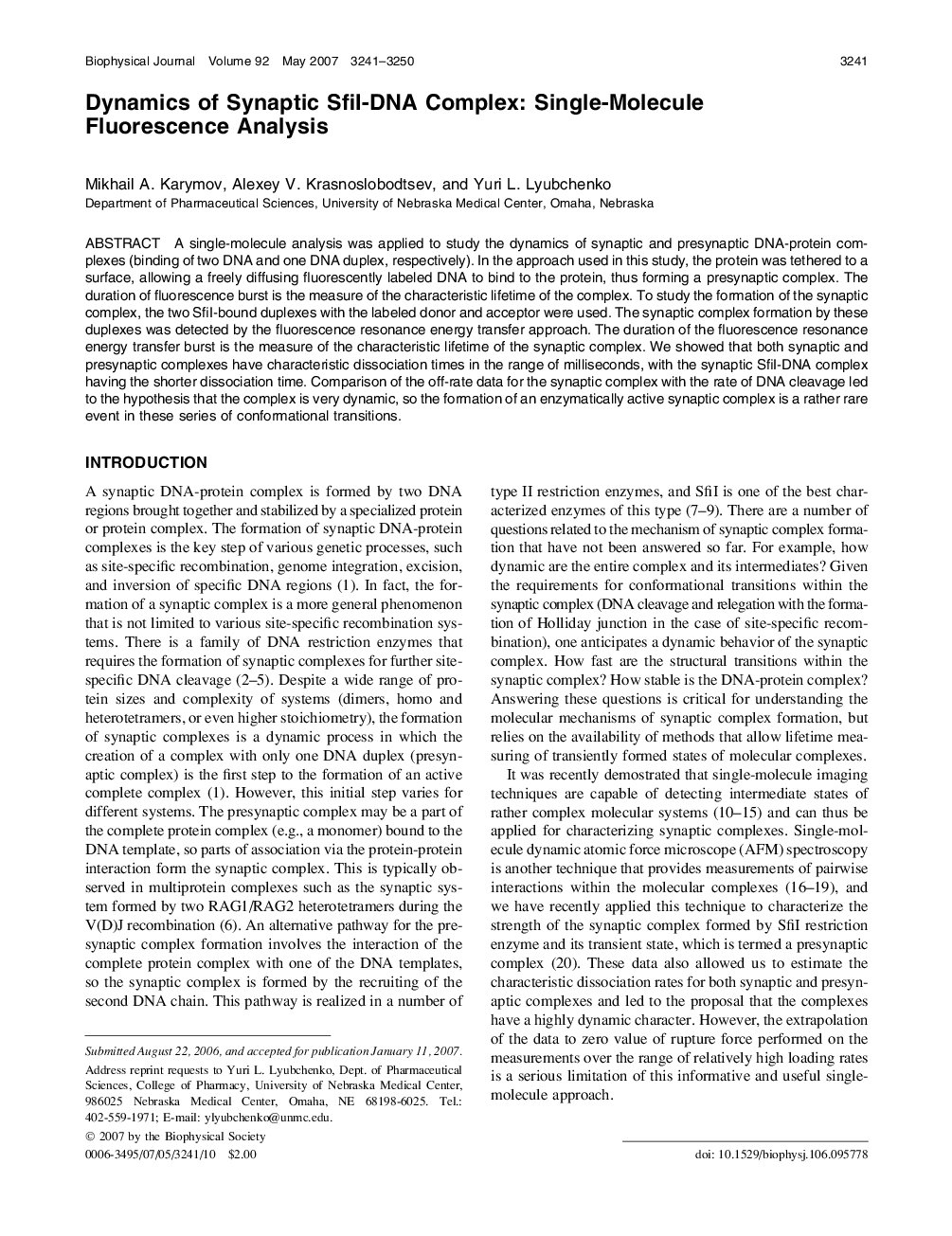| Article ID | Journal | Published Year | Pages | File Type |
|---|---|---|---|---|
| 1957931 | Biophysical Journal | 2007 | 10 Pages |
A single-molecule analysis was applied to study the dynamics of synaptic and presynaptic DNA-protein complexes (binding of two DNA and one DNA duplex, respectively). In the approach used in this study, the protein was tethered to a surface, allowing a freely diffusing fluorescently labeled DNA to bind to the protein, thus forming a presynaptic complex. The duration of fluorescence burst is the measure of the characteristic lifetime of the complex. To study the formation of the synaptic complex, the two SfiI-bound duplexes with the labeled donor and acceptor were used. The synaptic complex formation by these duplexes was detected by the fluorescence resonance energy transfer approach. The duration of the fluorescence resonance energy transfer burst is the measure of the characteristic lifetime of the synaptic complex. We showed that both synaptic and presynaptic complexes have characteristic dissociation times in the range of milliseconds, with the synaptic SfiI-DNA complex having the shorter dissociation time. Comparison of the off-rate data for the synaptic complex with the rate of DNA cleavage led to the hypothesis that the complex is very dynamic, so the formation of an enzymatically active synaptic complex is a rather rare event in these series of conformational transitions.
